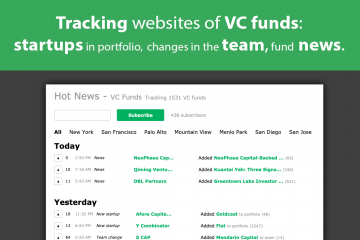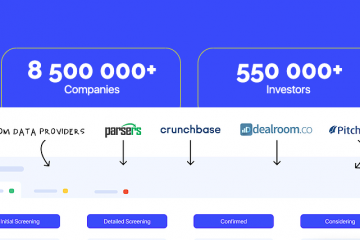How Big Data Increases Media Profits
Smartphones and digital media are becoming the main source of entertainment, so content creators need to use big data analysis technologies to connect with customers. This will help to see the hidden aspects of the behavior of the audience and greatly facilitate the path to achieving the ultimate goal – to deliver personalized content. Therefore, it is important to understand the role that big data plays in the entertainment and media industry.
According to CloudTweaks, Facebook collects and processes 500 terabytes of data daily. Google processes 3.5 billion inquiries daily. Amazon buys 152 million users daily. The volume of data is growing rapidly every day. Big data has become too big to ignore.
They can be a powerful tool for business promotion. For entertainment and media companies, big data is the key to future profit.
Who can benefit from this?
Almost any media business can use big data to its advantage. First of all, they will benefit from this:
- Video bloggers
Independent or private video creators who publish content that contains video, audio, text, and images.
- Media owners
Companies that own the right to sell content that can be distributed through retail or mass media resources.
- Gaming Companies
Any video game makers that can record user reactions to improve the product.
- TV channels
TV channels that broadcast their own or purchased video content.
How do Big Data processing technologies help entertainment and media companies understand bulk data flows from multiple sources?
- Prediction of audience interests
Traditionally, the choice of media feed formats has been limited. Today, they are replaced by many media services, such as pay-per-view, live broadcasts, and so on.
In the process of delivering content using these services, broadcasters also collect huge amounts of user data, through which their behavior and preferences can be understood.
According to statistics compiled by YouTube, the lion’s share of site visitors is between the ages of 18 and 34 years.
YouTube also released several other interesting statistics – for example, which videos most of the audience prefers to watch, or which devices are most often used for streaming.
How does YouTube know so much about their users? The company uses big data processing technologies. Thanks to them, you can analyze the behavior of the site’s audience and select personalized content for each user.
- Reducing churn
Losing customers is one of the biggest fears of many media companies. About 30% of clients share feedback on social networks. Until the advent of big data tools, it was almost impossible to process and profitably use data from multiple sources.
Now you can determine why users subscribe and unsubscribe, as well as find out which programs they like and which ones do not.
Thanks to big data, you can reduce customer churn.
- The optimized schedule of the live airs
The sharp rise in digital platforms literally broke the barrier that has long existed between the audience and content providers. Now to reach the end user without the help of an intermediary is easy.
Moreover, social networks also established individual contact with viewers. Contact with the audience through live broadcasts on a schedule can significantly increase the profits of media companies.
The technologies associated with big data can also be applied to the video-on-demand business model. They will help determine what content and when the viewer prefers to watch.
- Monetizing content
Big data helps media companies create new sources of income. They open up new opportunities for media owners to earn on the interests of the audience. Let’s look at this on the example of The Weather Channel.
The Weather Channel (TWC) is a television network owned by IBM. It uses big data to analyze user behavior in different weather conditions.
With big data, TWC has created a WeatherFX platform where merchants can advertise their products that sell better in certain weather conditions. Now, The Weather Channel gets at least half the advertising revenue with big data.
Thanks to the penetration and acceleration of mobile communication, it is now possible to use most of the audience for monetizing content.
- Effective targeted advertising
Income models of media companies mainly depend on programmed advertising. Over the years, she showed up at random, and not always users could like what they see.
Thanks to big data, marketers and companies can pinpoint customer preferences. They can also understand what content viewers most often watch and at what time of day.
Of course, this helps to increase the effectiveness of targeted advertising. Moreover, marketers can now react in real time in order to provide the audience with more meaningful and personalized advertising.
Big Data Source
It should be noted that there are problems collecting big data. One of them is that most of this data comes to the user in an unstructured form. Parsers helps in solving these problems and in saving your money and time. With the help of web scraper Parsers, you can get the necessary data in a structured form. With Parsers Big Data in Your Arms!
“Big” road ahead
Entertainment and media companies should use technology to process big data as a powerful tool for growth and development.
Thanks to them, you can quickly and easily identify changes in behavior and user preferences. This will help reduce the outflow of the audience, create alternative revenue channels and increase the flow of users.
Big data creates a new ecosystem, where customer experiences are at the center. In the end, the entire entertainment and media industry depends on the end user experience.


